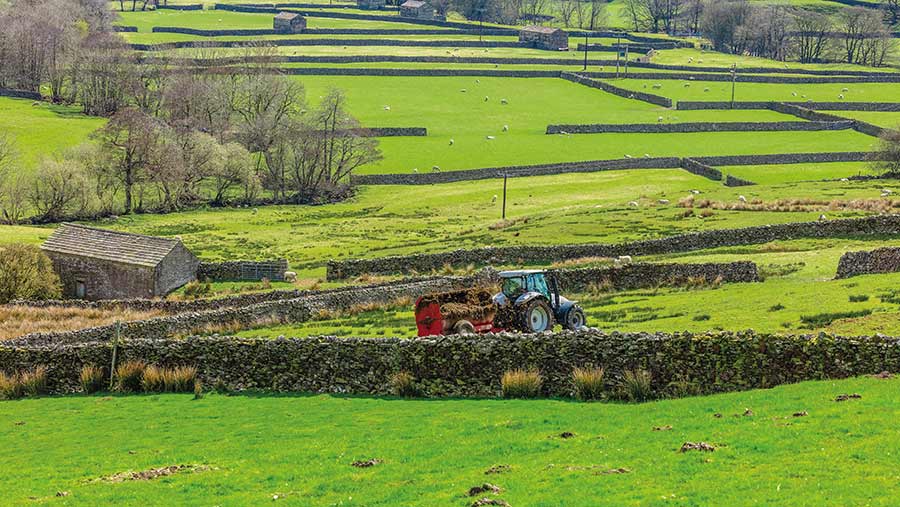How farmers can prepare for basis period tax reforms
 © Anne Coatsey/Adobe Stock
© Anne Coatsey/Adobe Stock Farmers running their businesses as sole traders or a partnership are being encouraged to work with their accountants now to mitigate the impact of changing tax rules.
The government announced in autumn 2021 that it was implementing reforms of the basis period for unincorporated businesses as part of its Making Tax Digital for Income Tax Self Assessment programme.
This means businesses will have their profits taxed in line with the tax year, ending on April 5, rather than the current approach of taxing profits based on the accounting period of the business.
See also: Tax reform warning for those using farm averaging
The new rules will take effect from the 2024-25 tax year, although there will be transitional arrangements for 2023-24.
Julie Butler, founding director of Hampshire-based accountant Butler & Co, warns that the unique nature of farm accounting means many farmers will be affected and says they should start looking at their options once harvest is over.
In the transitional year some businesses will experience extra taxation because, as well as being taxed on the 12 months of profits from the end of their current basis period for 2022-23, there will also be a transitional profit subject to tax based on the period from the end of those 12 months to 5 April 2024.
For example, in the transition year, the basis period for a business with a 30 June year end would be determined by adding together:
- Taxable profit for the year to 30 June 2023 (the standard component)
- Taxable profit from 1 July 2023 to 5 April 2024 (the transitional component).
“Consequently, this brings the profits taxed into line with the tax year basis to 5 April 2024, but results in 21 months of profit being taxed in the transitional 2023-24 tax year,” says Mrs Butler.
Overlap profits
Affected businesses will be able to deduct any “overlap profits” from this larger-than-normal tax bill.
Overlap profits are those generated during the opening years of a business, where a taxpayer may have been required to pay tax twice for an initial short basis.
However, with many farming businesses pre-dating the introduction of self-assessment rules in 1997, determining the overlap position may not be straightforward if the records are not available.
“It is a good opportunity to find out if your accountant has your overlap figures and get into dialogue with them now about the best way forward,” Mrs Butler says.
She says the larger tax bills will hit at a time when farming businesses are expected to be feeling the squeeze because of rising costs and the drop in BPS payments.
The government has agreed that any “excess profits” generated in the transition year can be spread across up to five years.
However, with the Annual Investment Allowance limit at £1m until 31 March 2023, some farmers may choose to reduce the amount of tax they owe by investing in qualifying plant and machinery.
However, Mrs Butler suggests businesses need to start doing calculations and writing a business plan so they can predict the outcome.
They can then consider whether they have enough money set aside to cover the tax bill.
Aligning dates
A big decision for farmers – and one which will need to be looked at on a case-by-case basis – is whether to align their accounting period to the tax year.
This may sound simple but can be a complex decision as having a year-end which aligns with the production cycle of a business, as most now do, can provide valuable management information.
It may also be that moving the year end is problematic, if it coincides with a particularly busy period in the farming calendar.
Farmers with a contract farming agreement or other joint-venture arrangement will also need to liaise with their contractor or share farmer to consider the impact of changing the year-end on those arrangements.
“People do need to start reviewing their situation and look at the figures and costs, mindful of the loss of BPS and introduction of Environmental Land Management schemes,” says Mrs Butler.
If the decision is made to leave the accounting year unchanged, this means that from 2025 the tax liability will be calculated by apportioning profits across different periods and potentially making estimates on Income Tax Self-Assessment forms.
This will place a far greater onus on farming businesses to be on top of what is happening in real time, using management accounts.
“The tools of financial understanding are not just the historic accounts,” says Mrs Butler.
“Farmers should also be doing management accounts and business projections so they should see if they have a bad year ahead. Some farmers are very good and already do this, but many don’t.”
